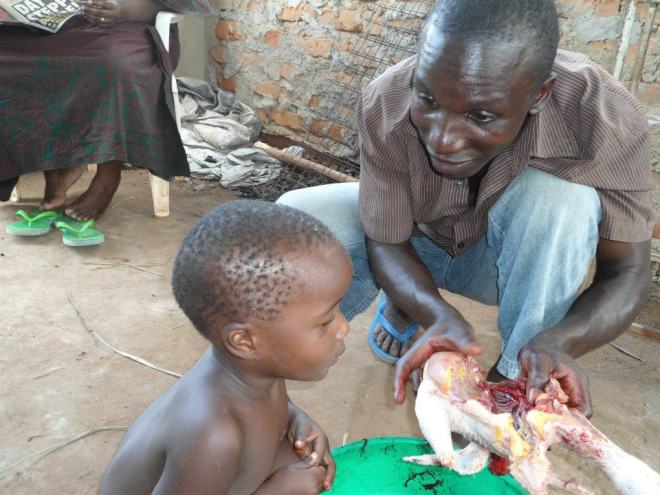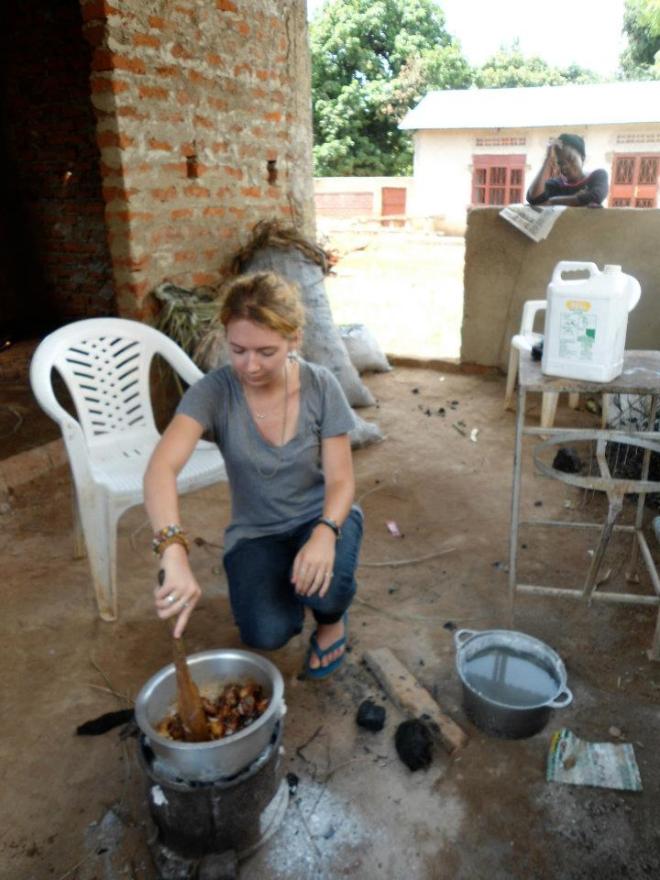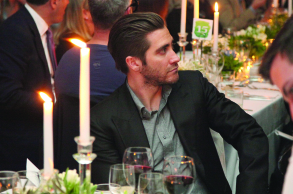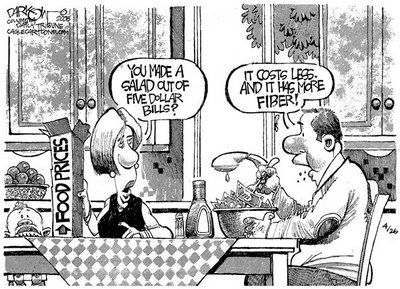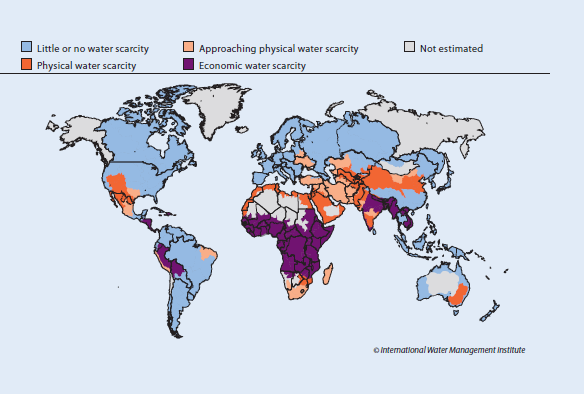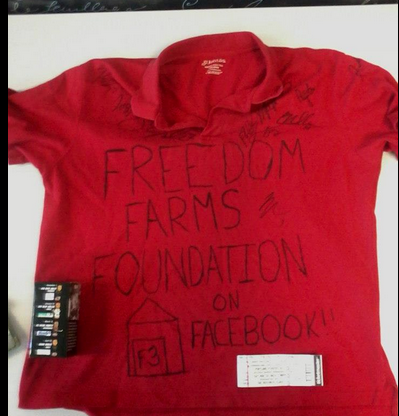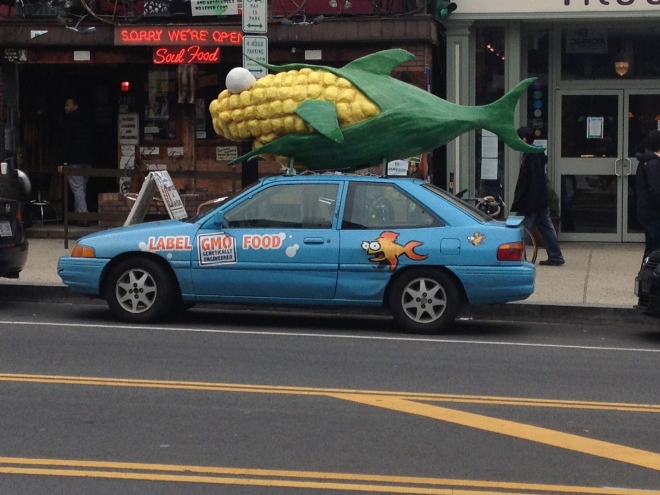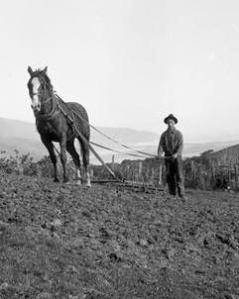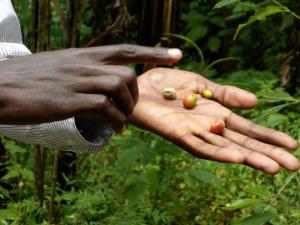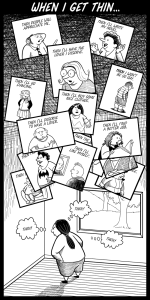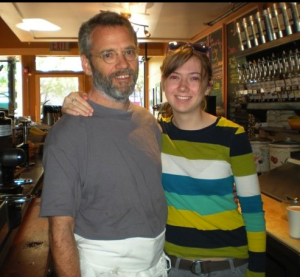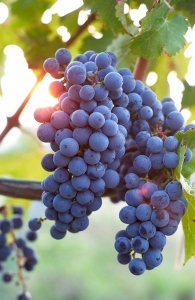My original goal with this blog was to “investigate the invisible chains that connect people with their food.” If I’ve learned one thing over the course of this semester, it’s that there are many more of these chains than I ever realized. People are not only disconnected from their food in terms of production, there is also a general lack of connection in terms of being mindful of what we are eating and how it is influences our bodies. While I would conclude that this is overall a negative trend in thought and practice, all is not lost. People are pushing back against this disconnect, and striving to reverse it in its many forms. I have learned just how pervasive food-related issues are, and how they are in fact inextricably linked to issues of race, class, gender, and many other forms of inequality that are constantly tearing at today’s society.
Starting small, Anna Tsing’s work with microorganisms and interspeciality is attempting to combat the notion of the self as normative, and food as ‘other.’ In the days of fast food restaurants and microwave dinners it is apparently becoming increasingly difficult for people to recognize the very real relationships that exist between their bodies and the food they ingest. At the microbiological level there is a constant give and take in terms of energy and nutrients. There is a fascinating biochemical relationship that occurs starting with taste buds, and working its way through our digestive track.
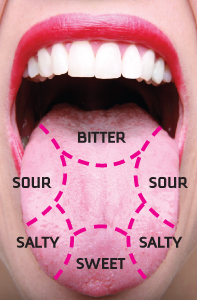
Without the relationship between our tongue and food, eating would be a much more boring experience!
Even before the food reaches our mouths, we have already influenced its production, and it has influenced our actions. Scaling up, we must recognize that we are not only impacted by our food, but that we impact the food as well. From cultivation to pollination we are constantly shaping the outside world while it is simultaneously shaping our inner systems.
From the micro level we zoom out to the personal/social. Food is a means of personal expression, but can also be personally limiting. Food can connect people while simultaneously dividing them. Coming together to share a meal is a tradition which has been honored and valued throughout the majority of human societal interaction. Food provides an opportunity to build family units and pass on customs. ‘The table” is a place to share the stories of the day–another practice which is sadly being worn thin in some households with the rise of television, personal electronics devices, and increased work hours that prevent the facilitation of ‘family dinners’ (however family may be defined). And are we also seeing a rise in social anxieties which manifest themselves in a wide rang of eating disorders. Food is a fundamental unit essential to human (and all) life. I am fortunate enough to have never known the pangs of food insecurity, however in my other activities outside the New Food Activism classroom I am significantly involved with humanitarian issues in places such as Sudan and Congo–areas of the world that certainly suffer from lack of access to safe food. And I would be doing my social justice self a disservice to ignore the fact that for millions of Americans food insecurity is a daily reality. Food related issues span across the globe and touch families in America in just the same ways they touch families in Sudan.
Rachel Slocum’s article (footnote 1) about race and food really highlighted the ways food is used like so many other commodities, “both to solidify group membership and to set groups apart” (Slocum 4). She touches on how food can represent different things to different communities. As mentioned above, food serves a purpose that is very deeply communal. This can be on a familial level, or a societal one, and can be both beneficial and detrimental. For example, “embracing soul food is a statement of racial pride because it reclaims foods previously despised…people of color have often rejected vegetarianism and veganism as choices of the privileged” (Slocum 5). So while food may seem to be an innocuous aspect of life that is merely a necessity, it can in fact be a very real driving force behind many of the broader social structures people struggle against daily.
From interpersonal we move to societal. As the focus of this class suggests, food presents countless opportunities for active engagement in terms of public activism. From GMO awareness to animal rights activists, food and food production has wide societal implications that people oftentimes are not happy about. I think this is the level I was initially concerned with when I began this blog, even though I ended up focuses more heavily on other levels. I have been fascinated for quite a while with the huge gaps in time and place that are associated with the food we eat. The fact that I don’t know where 99.9% of my food comes from is pretty disconcerting. Of course there are ways to mitigate this, but it takes effort. Since food is a basic unit of life, it seems as though its production should be basic as well–but I guess I shouldn’t be surprised that capitalistic forces have co-opted it like so many other of our basic needs. I really identified with the frustrations expressed in Dona Brown’s book, Back to the Land (see footnote 2). For centuries, people have found food as a frontier for resisting the normative industrial complex of modernity and capitalism. It can’t be merely coincidental that we have had so many waves of this back to the land movement, even just within the past century of American history. Clearly there is something people feel inherently uncomfortable about when it comes to mass production of food and the shift away from the idyllic subsistence farming life. The problem is that often this type of life is characterized as unrealistic or naive in the context of the modern world. However, as we saw especially with the back to the land movements of the 1960s and 70s, activists with this frame of mind locate food activism in a much broader set of structures that are also oppressive. Since food is–as I keep mentioning–such a fundamental necessity, they find it a natural fulcrum on which to balance their more overarching social criticisms. I think I sympathized with the frustrations of the back to the landers before ever really knowing they existed. There is something inherently disconcerting about not knowing where your food comes from, and feeling like modern life does not afford one the time that would be necessary to invest in becoming completely food-aware. But I think there are ways to be mindful and intentional when it comes to eating that do not necessarily require a complete overhaul in terms of commitment.
Clearly none of these categories is absolute or exclusive. The omni-presence of food (or lack thereof) in our daily lives means it is something that will pervade our thoughts and actions in ways we may not even realize until we take the time to identify them. 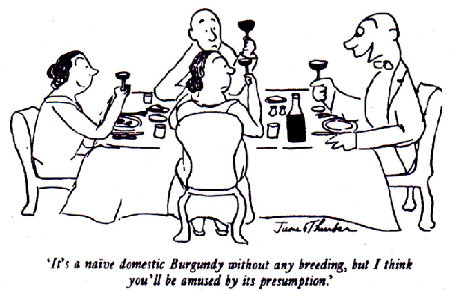 Pierre Bourdieu elaborates on this notion of intersectionality in his writing on taste and class (see footnote 3). He contends that while most people assume ‘taste’ is set a deeply personal preferences dictated by biology, all of us are in fact biased in our tastes due to our unique geographical, social, and economic positions. We learn to like certain things because that is what we are ‘supposed’ to like, similar to how Rachel Slocum describes food as a means of group definition. Just as we must fight against institutions of oppression such as racism and sexism, so too must we be able to recognize the ways these institutions are deeply enmeshed with basic issues such as food security and access to healthy meals. We shouldn’t assume that people in some communities which struggle with higher levels of obesity are completely at fault, but should rather examine the socioeconomic frameworks at play–such as Food Deserts–that can be corrected at a policy level if there is greater attention to their implications.
Pierre Bourdieu elaborates on this notion of intersectionality in his writing on taste and class (see footnote 3). He contends that while most people assume ‘taste’ is set a deeply personal preferences dictated by biology, all of us are in fact biased in our tastes due to our unique geographical, social, and economic positions. We learn to like certain things because that is what we are ‘supposed’ to like, similar to how Rachel Slocum describes food as a means of group definition. Just as we must fight against institutions of oppression such as racism and sexism, so too must we be able to recognize the ways these institutions are deeply enmeshed with basic issues such as food security and access to healthy meals. We shouldn’t assume that people in some communities which struggle with higher levels of obesity are completely at fault, but should rather examine the socioeconomic frameworks at play–such as Food Deserts–that can be corrected at a policy level if there is greater attention to their implications.
Personally, I feel this class is only just the beginning. I know that I have barely begun to scratch the surface in terms of building my knowledge base of food and food-related activism. I may not foresee myself ever becoming any sort of great champion for these types of issues, but that’s one of the great things I have learned about food activism, and is what I have tried to articulate in this final post: you don’t have to devote your days solely to food issues in order to be an informed actor who is working to make a difference. Unlike other causes that require a great deal of commitment in terms of knowledge, time, and persistence, food activism is something you can do on your own, because you are ultimately at the endgame of your actions. While there are admirable efforts to be made in terms of restructuring the broader social impacts of food-related issues, you can make a difference just by choosing to stay informed and make a conscious effort change things you find troubling about your own diet and purchasing habits. I think food activism offers several fascinating entry points for activists, and the more you learn about the issues, the more you realize just how often food issues connect to the other issues you undoubtedly care about in your life–whether that’s concern about the availability of green spaces for your children to play in your neighborhood, or concern for humanitarian situations in Sudan. The knowledge I have gained in this course will certainly carry through to other aspects of my life in ways I never could have anticipated.
Footnotes:
1-Slocum, Rachel. “Race in the Study of Food.” Progress in Human Geography. La Crosse, WI: University of Wisconsin, 2011.
2-Brown, Dona. Back to the Land: The Enduring Dream of Self-Sufficiency in Modern America. Madison, WI: University of Wisconsin, 2011.
3-Bourdieu, Pierre. Distinction: A social critique of the judgement of taste. Harvard University Press, 1984.

